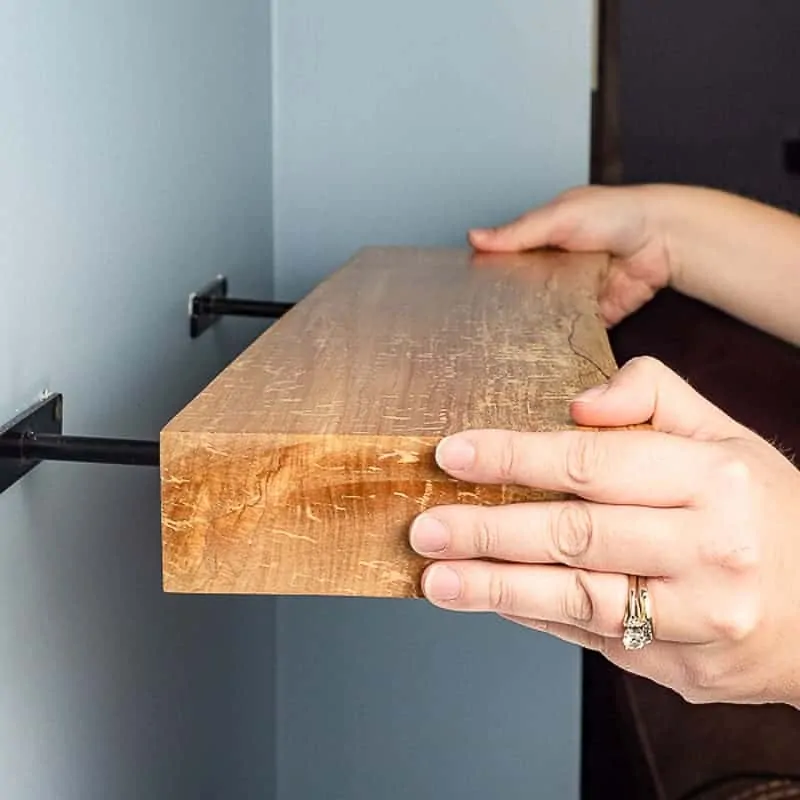
Unlocking the Power of Floating Shelves: A Guide to Organizing Your Home
Are you tired of cluttered shelves and overflowing drawers? Embrace a more organized and stylish home with the help of floating shelves. These versatile and space-saving solutions offer a plethora of possibilities for displaying your prized possessions, showcasing your personality, and creating a functional and aesthetic haven.
Why Choose Floating Shelves?
Floating shelves, unlike traditional shelves, offer a clean and minimalist look by appearing to float against the wall. They are free from visible brackets or supports, creating a seamless and contemporary feel. Beyond aesthetics, floating shelves provide numerous benefits, including:
- Space-Saving: Floating shelves eliminate the need for bulky cabinets or bookcases, maximizing floor space and creating an airy ambiance.
- Versatile Applications: These shelves can be used in virtually any room, from living rooms to bedrooms, kitchens to bathrooms, providing a customizable solution for organizing and displaying items.
- Easy Installation: With a few simple tools, floating shelves can be installed quickly and easily, making them a perfect DIY project for home improvement enthusiasts.
- Style Flexibility: Available in a wide range of materials, finishes, and sizes, floating shelves adapt seamlessly to various design aesthetics, whether modern, rustic, or contemporary.
Mastering the Art of Floating Shelf Organization
The key to maximizing the potential of floating shelves lies in strategic organization. Think beyond just placing items haphazardly; instead, cultivate a system that enhances functionality and aesthetics.
Grouping Like Items
Group similar items together to create a visually pleasing and logical organization. For example, on a living room shelf, gather your favorite novels, decorative figurines, or family photos. In a kitchen, group spices, cookbooks, or serving trays. This visual coherence promotes a sense of order and makes finding what you need easier.
Strategic Height and Placement
Consider the height of your shelves and their placement in relation to the room's flow and existing furniture. Lower shelves can be ideal for displaying smaller items or showcasing plants, while higher shelves provide a perfect spot for larger items or artwork. Experiment with different configurations to determine the ideal layout for your needs.
Balancing Functionality and Aesthetics
Striking a balance between functionality and aesthetics is paramount. While organization is crucial, remember to infuse personality and style into your shelf displays. Mix and match textures, colors, and sizes of items to create an engaging and visually appealing composition. Embrace personal accents, such as framed photographs, travel souvenirs, or art prints, to add a unique touch.
Creative Ideas to Elevate Your Home with Floating Shelves
Floating shelves offer endless possibilities for transforming your home into a stylish and functional space. Here are some inspiring ideas to unleash your creativity:
Kitchen Organization
Install floating shelves above the counter for a visually appealing storage solution for spices, cookbooks, or decorative items. This not only saves space but also elevates the kitchen's aesthetics. For a touch of elegance, opt for shelves with a contrasting finish to the kitchen cabinets.
Living Room Display
Floating shelves are perfect for showcasing your favorite artwork, photos, or decorative objects. Create a gallery wall effect by arranging multiple shelves at varying heights. Use these shelves to create a focal point in the room, or add visual interest above a sofa or fireplace.
Bathroom Storage
In the bathroom, utilize floating shelves to store toiletries, towels, or decorative items. Consider opting for waterproof materials like glass or wood with a moisture-resistant finish. For a contemporary look, install shelves with minimalist design elements, creating a clean and sophisticated feel.
Bedroom Nook
Add warmth and functionality to your bedroom by creating a cozy reading nook. Install floating shelves above your bedside table for easy access to books, a reading lamp, or a soothing scented candle. For a more eclectic feel, incorporate shelves with unique textures or shapes to complement your bedroom decor.
Floating shelves are more than just storage solutions; they are opportunities to express your personal style, showcase your treasured belongings, and create a functional and aesthetically pleasing home environment. Embrace the power of floating shelves, and unlock the potential for a more organized and beautiful living space.





